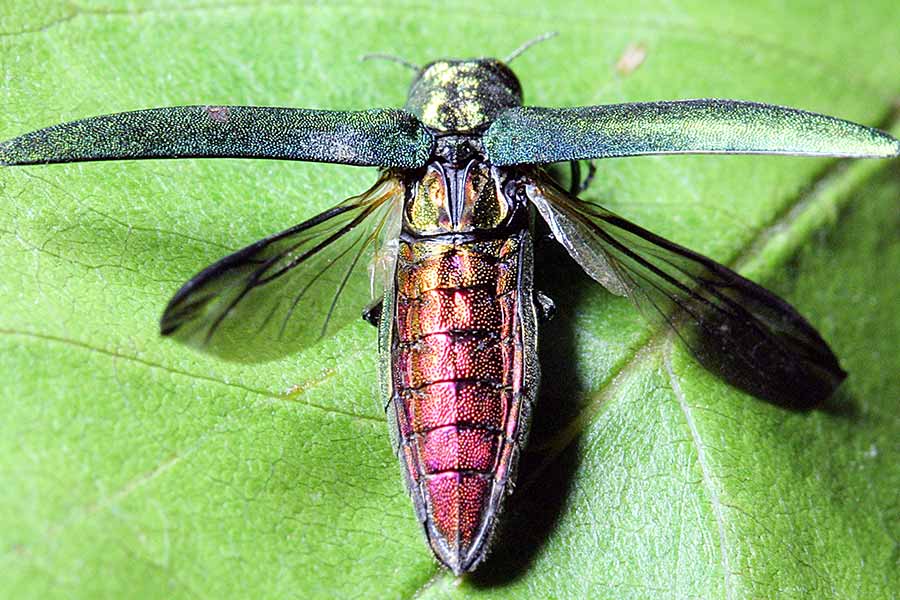 One of America’s most destructive insect species has been spotted on the west coast. The Emerald Ash Borer is a metallic green beetle first spotted in Detroit, MI in 2002. While it’s unclear how, exactly, this beetle made its way to the U.S., it’s theorized that it came from pallet material in Asia.
One of America’s most destructive insect species has been spotted on the west coast. The Emerald Ash Borer is a metallic green beetle first spotted in Detroit, MI in 2002. While it’s unclear how, exactly, this beetle made its way to the U.S., it’s theorized that it came from pallet material in Asia.
Last month, after 20 years of being beetle-free, an Emerald Ash Borer was spotted for the first time in Forest Grove. Emerald Ash borers are able to kill most ash trees within 10 years, and have had a multi-billion-dollar economic impact in the U.S.
The Oregon Department of Forestry’s Scott Altenhoff told KLCC, “Early detection is going to be key, so if folks have ash trees, or suspect they have ash trees, if folks can familiarize themselves with the basic signs and symptoms of Emerald Ash Borer and then call in early, that will help us.”
Altenhoff mentioned that Oregonians should look for dieback at the top of ash trees, and that woodpeckers are a clear sign of infection. Additionally, look for “D”-shaped exit holes on your tree’s “S”-shaped galleries under the bark. Both woodland and wetland parts of the Willamette Valley are key parts of Oregon’s ash trees, and will be the primary area where containment efforts are focused.
Altenhoff said that the City of Eugene is surprisingly far ahead of the curve, with local parks mapping out vulnerable areas and creating response plans. Some trees may be removed, but Eugene’s parks will be using the best practices learned from other communities.
Eugene was also a major part in gathering ash seeds – roughly one million ash tree seeds have been gathered and stored. Should the worst-case scenario come to fruition, the state could potentially replant more genetically resistant trees.
“It’s an ecologically vital tree as it shades water, keeping it cooler for fish,” Wyatt Williams, the Oregon Department of Forestry’s invasive species specialist, said in a press release. “The roots stabilize streambanks, reducing erosion. And lots of animals, birds and insects eat the seeds and leaves. Losing it will likely have a huge impact on those ecosystems.”
If you see an Emerald Ash Borer, report it to the Oregon Invasive Species Council hotline. More information about the impact of EABs on Oregon’s native ash trees and urban forests can be found here.
Oregon’s response plan can be found here.
By Ethan Hauck
Do you have a story for The Advocate? Email editor@corvallisadvocate.com


